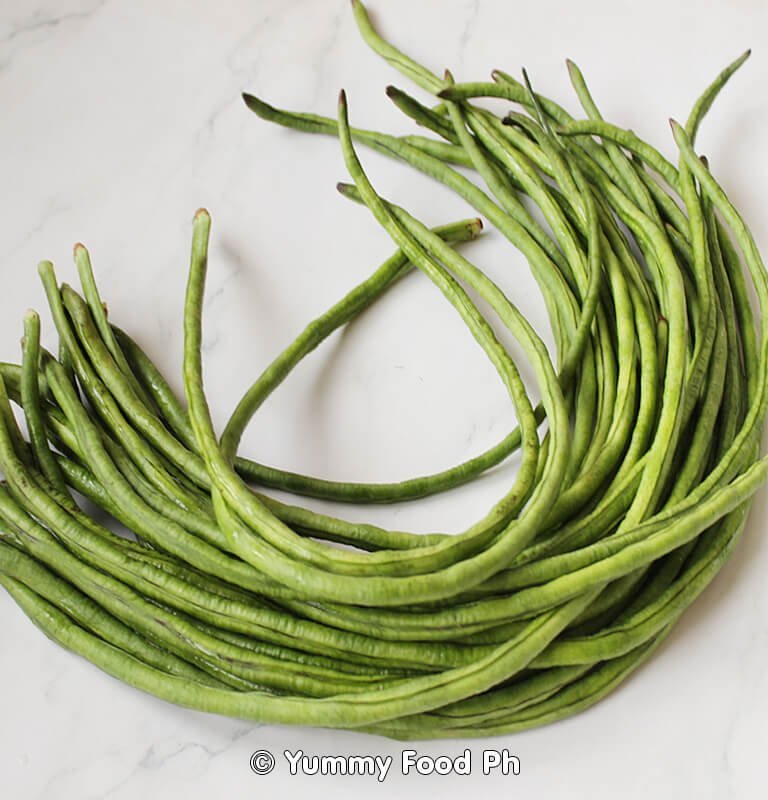String Beans (Sitaw): The Versatile Filipino Vegetable Favorite
Introduction
String beans (Vigna unguiculata subsp. sesquipedalis), locally known as sitaw in the Philippines, hold a cherished place in Filipino cuisine and home gardening. These slender, podded legumes – technically a variety of cowpea rather than common green beans – thrive in tropical climates and offer remarkable culinary flexibility. From bustling urban markets to provincial backyard gardens, sitaw represents both a nutritious staple and a symbol of Filipino agricultural ingenuity.
Botanical Profile
- Growth Habit: Fast-growing climbing vines (3-4m length)
- Pod Characteristics:
- Length: 30-75 cm (longer than common green beans)
- Color: Bright green when young, yellowing when mature
- Texture: Crisp snap when fresh, fibrous if overgrown
- Yield Potential: 1-2 kg per plant per season
Cultivation Practices
Optimal Growing Conditions:
- Soil: Well-drained loam with pH 6.0-7.0
- Support Systems: Bamboo trellises or kakawate tree guards
- Planting Schedule:
- Wet season: May-June (harvest in 60-75 days)
- Dry season: October-November (requires irrigation)
Care Tips:
- Regular pruning for air circulation
- Organic pest control (neem oil for aphids)
- Succession planting every 3 weeks for continuous harvest
Culinary Significance
Nutritional Highlights:
- Rich in vitamin K (25% DV per cup)
- Good source of manganese and fiber
- Low-calorie (31 kcal per 100g)
Signature Filipino Preparations:
- Adobong Sitaw: Braised in vinegar-soy sauce with garlic
- Ginataang Sitaw: Simmered in coconut milk with shrimp
- Pinakbet: Mixed with bitter melon and eggplant
- Fresh Lumpia: Wrapped with lumpia wrapper
Cooking Techniques:
- Quick blanching (retains crunch)
- Stir-frying with bagoong (shrimp paste)
- Pickling as achara (preserved relish)
Economic & Cultural Importance
- Market Value: ₱40-80/kg (depending on season)
- Home Gardening: Requires just 1m² space per plant
- Festival Use: Featured in provincial harvest celebrations
Storage & Handling
- Fresh: 5-7 days refrigerated in perforated bags
- Preservation:
- Freezing (blanched 2 minutes)
- Dehydrating as crispy snacks
- Fermenting as burong sitaw
These ingredients are frequently used in culinary preparations.
Nutritional Value
Beans are a good source of copper, which helps connective tissue to grow; vitamin K, which helps wounds heal more quickly; fiber, which helps the digestive system function normally; and vitamin C, which helps the immune system. The beans also contain iron, magnesium, phosphorus, vitamins B1 and B2, calcium to safeguard bones and teeth, potassium to maintain fluid balance, and vitamin A to support healthy organ function.
Conclusion
More than just a humble vegetable, sitaw embodies the Filipino spirit of resourcefulness and flavor innovation. Its remarkable adaptability – thriving in both rural farms and urban container gardens – mirrors the resilience of Philippine agriculture. Whether enjoyed in a smoky adobo or crisp-fresh in a summer salad, string beans continue to nourish generations of Filipinos while maintaining their status as one of the most reliable and rewarding crops for home growers. Their enduring popularity proves that sometimes, the simplest vegetables offer the richest culinary possibilities.
Visit us on YouTube: Yummy Food PH

